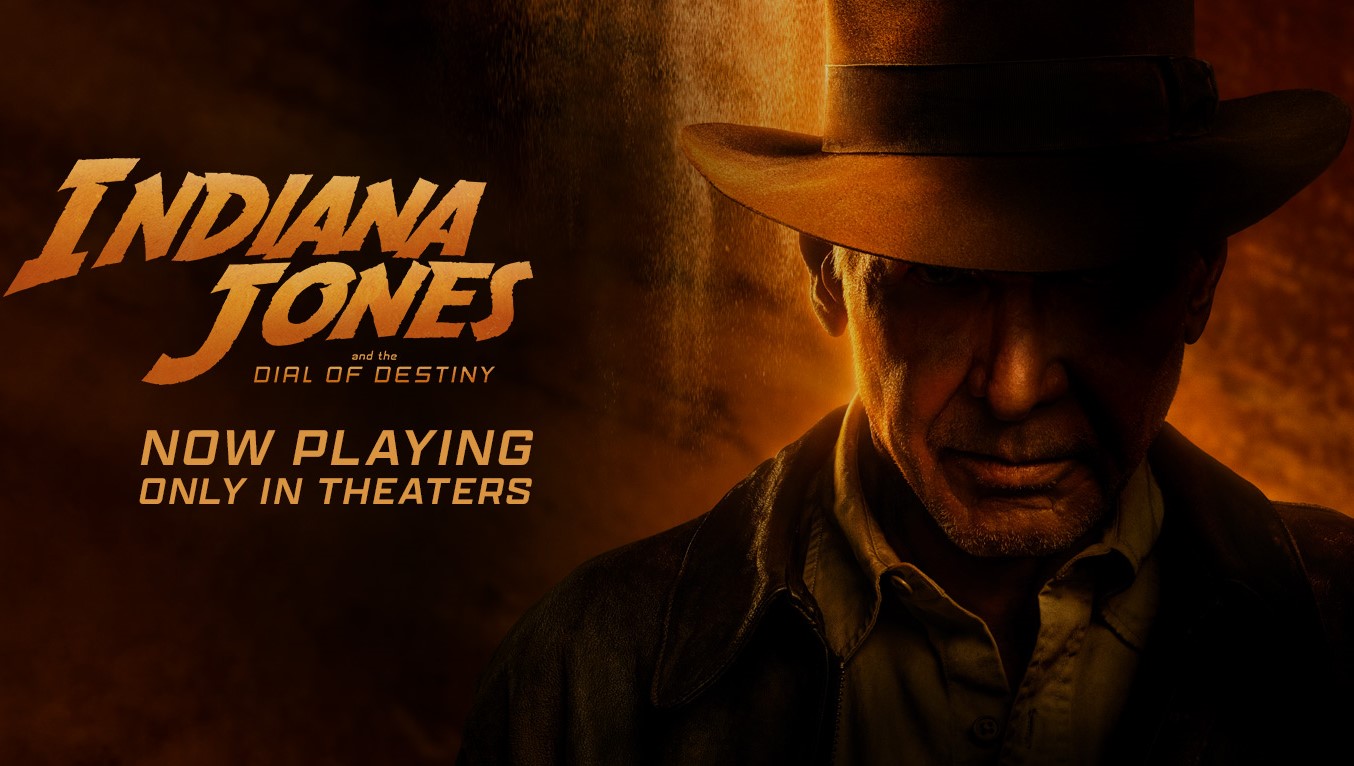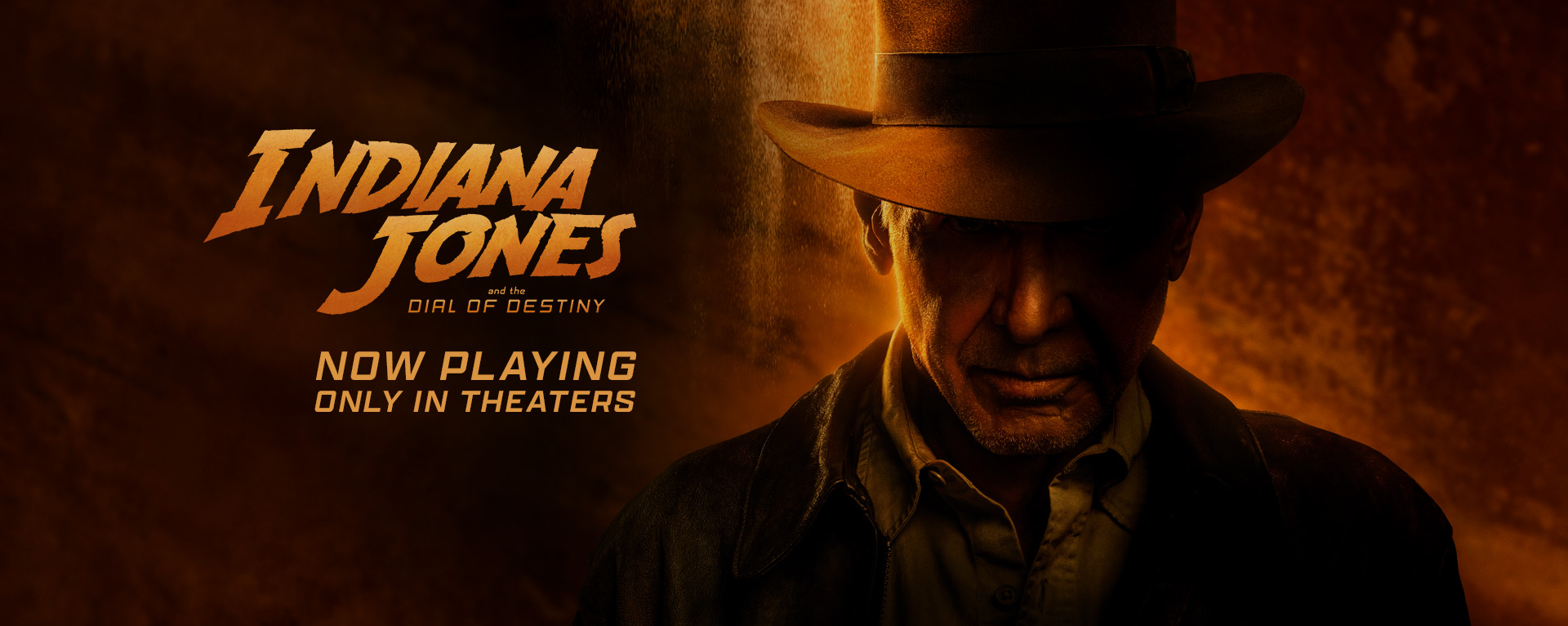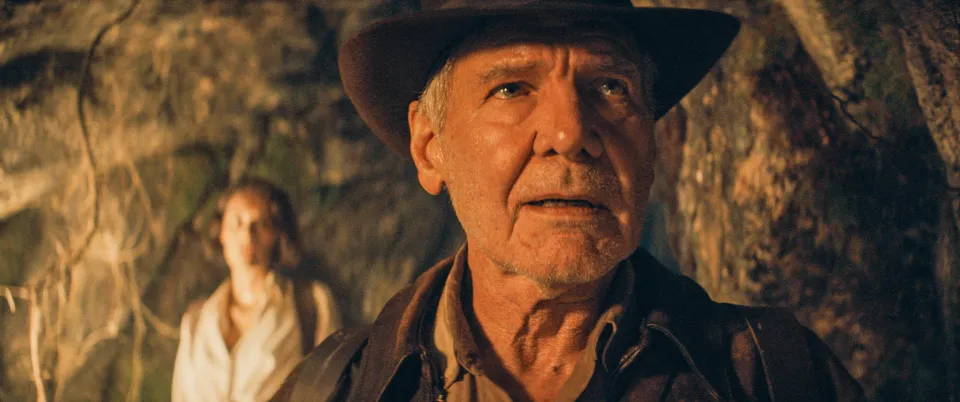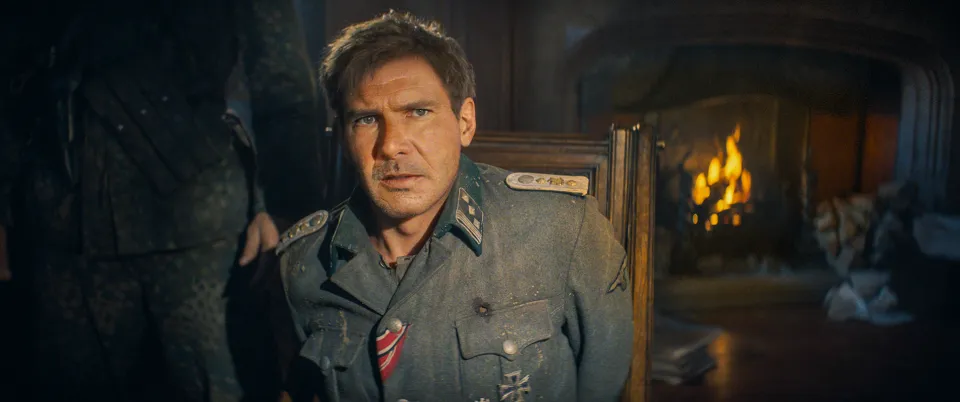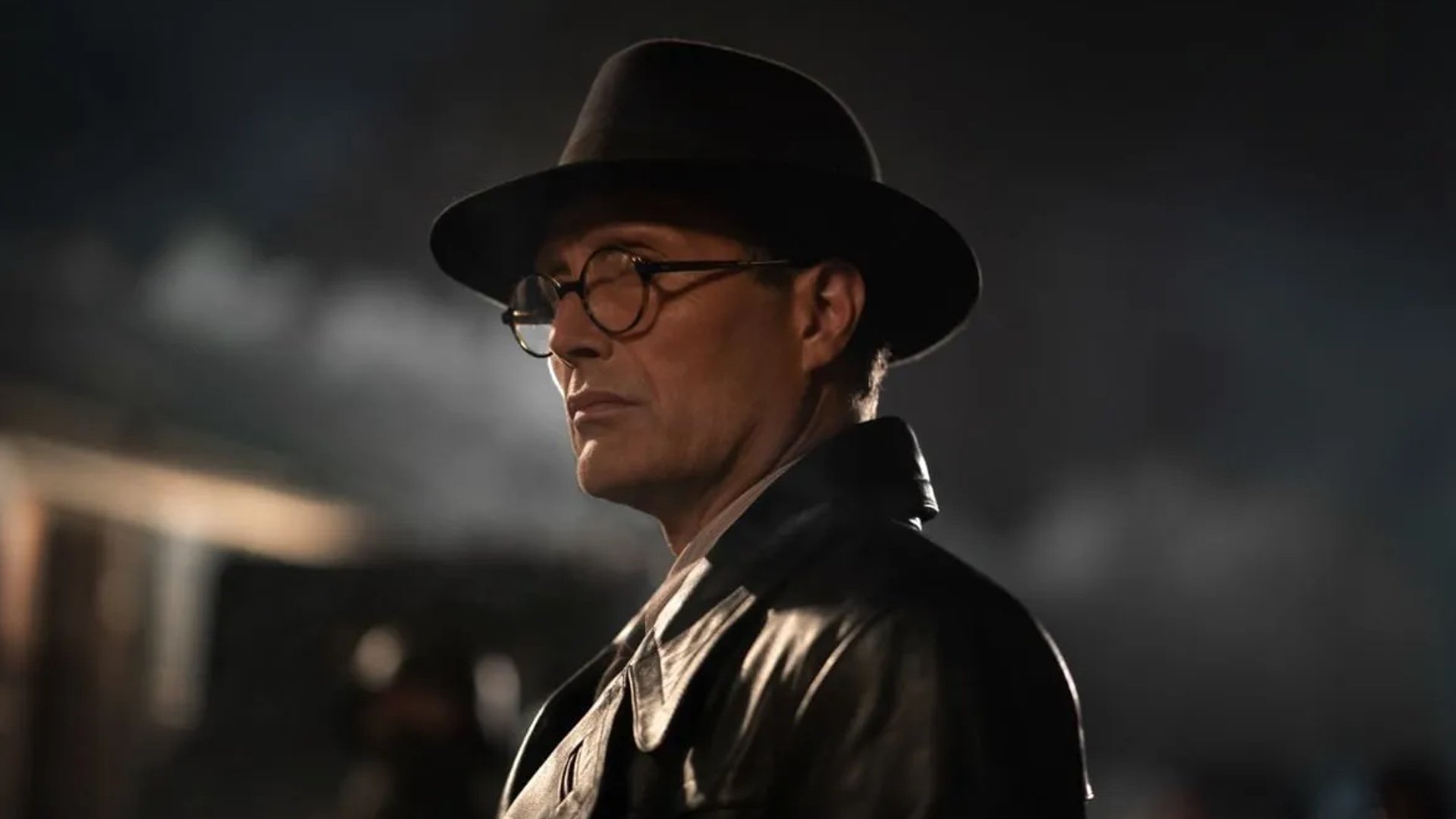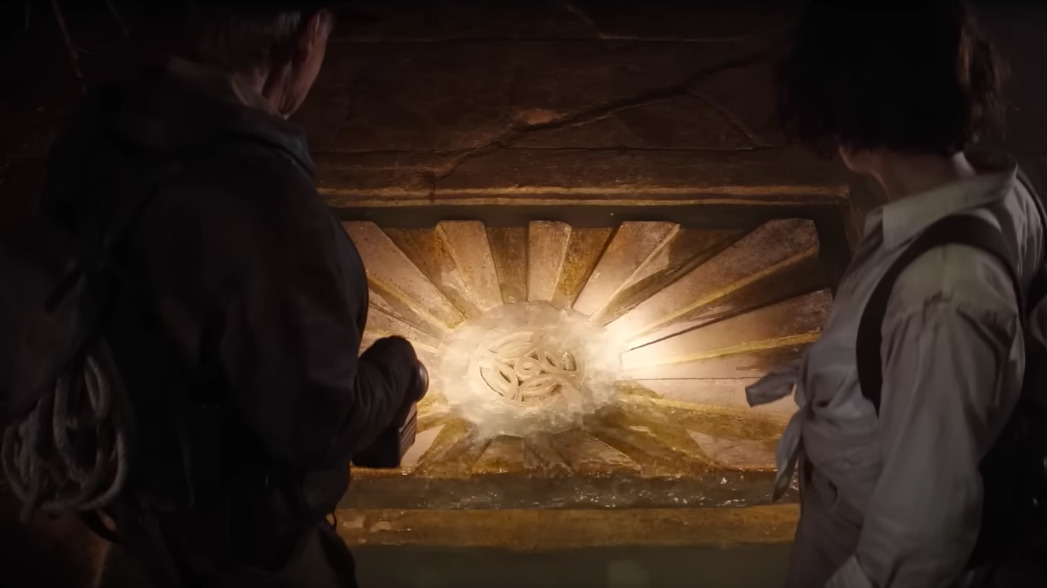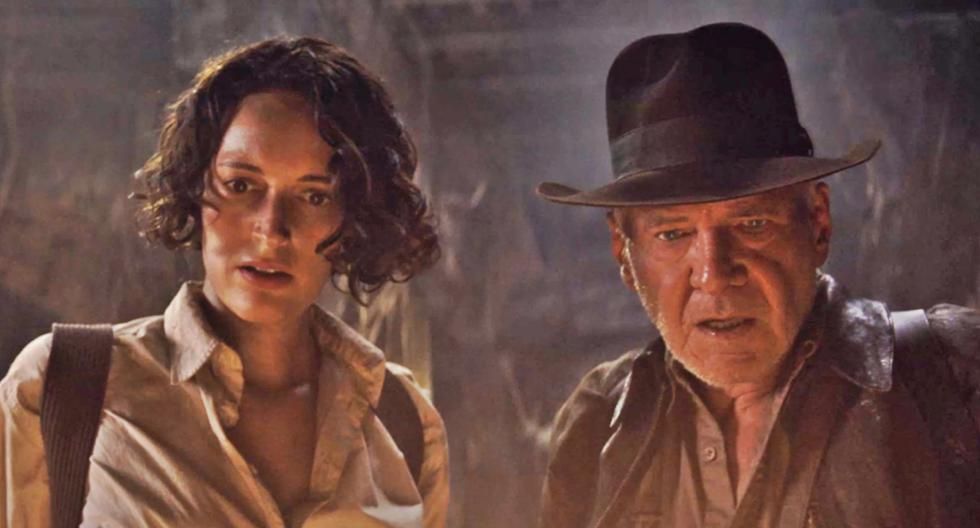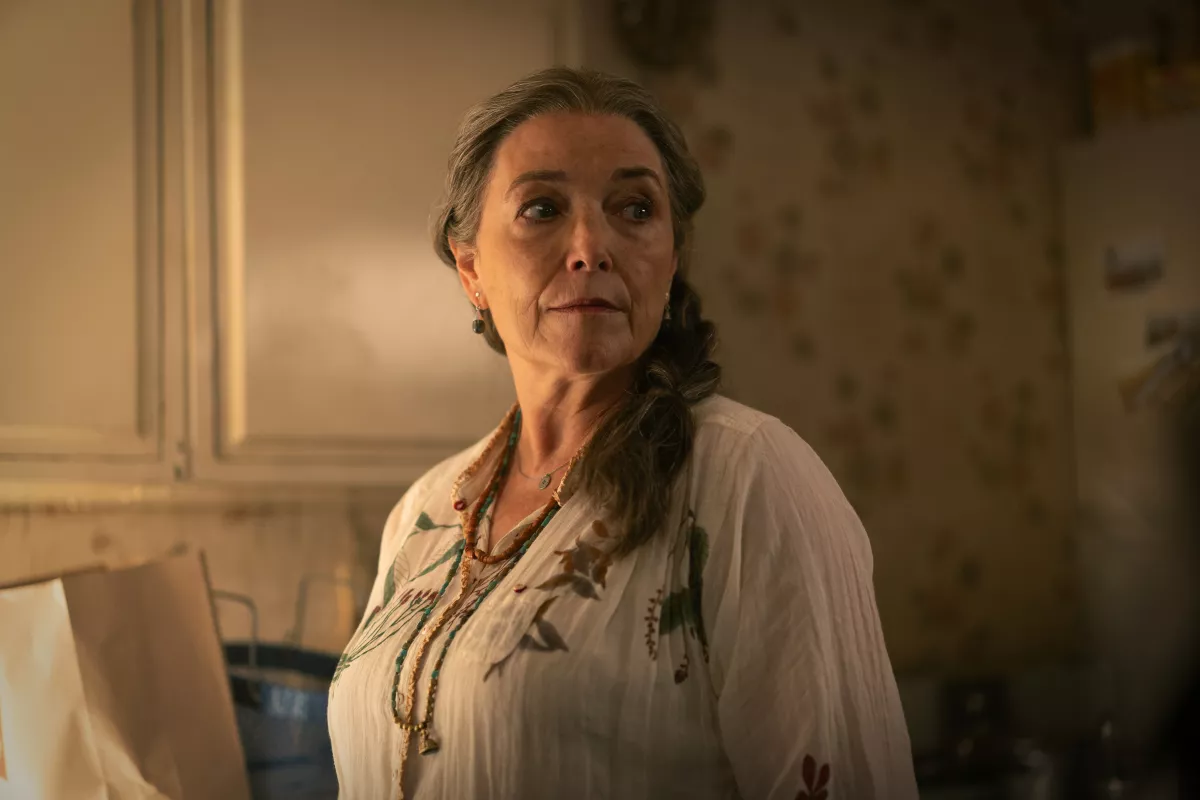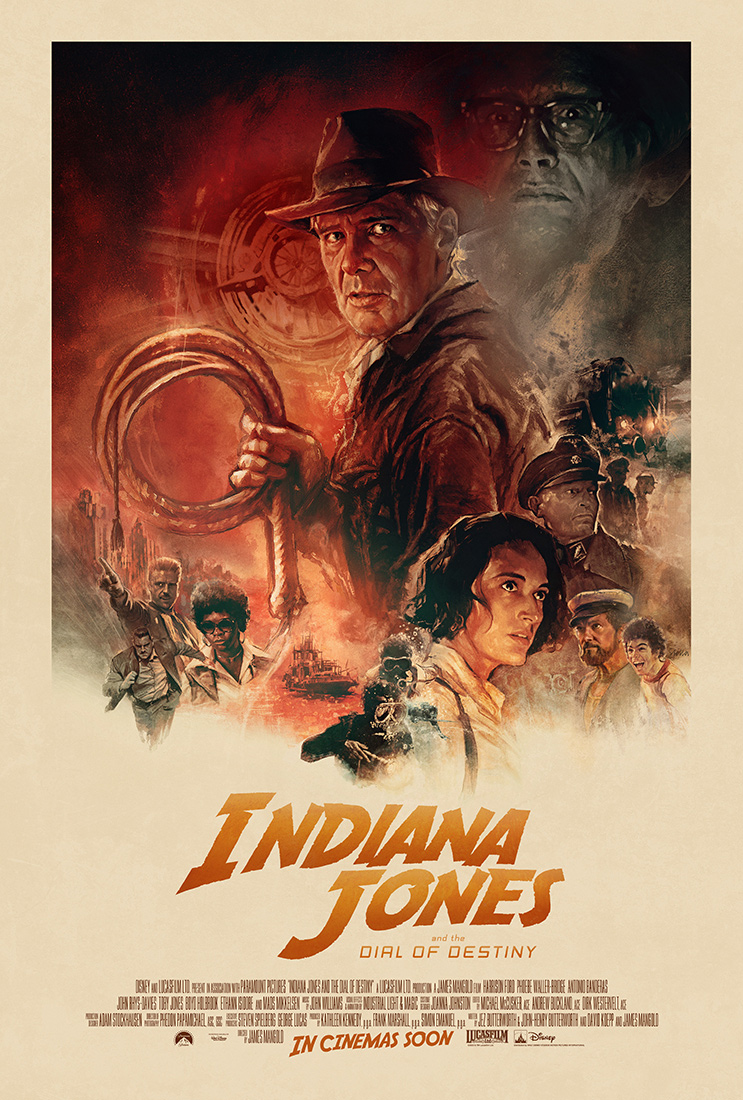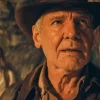BY HARLAN CHAPMAN-GREEN
It’s been no secret that a new Indiana Jones film has been released in cinemas, heck, it’s not even new, it’s been out for a couple of weeks now. Due to a busy work/life schedule, I’ve only just had time to sit down and write this review of Indiana Jones and the Dial of Destiny, but I’ve had plenty of time to collect my thoughts and check out what some of the other reviewers think of it. I say other reviewers; I mean actual critics like The Critical Drinker and The AngryJoe Show, both of which I watch on YouTube and find funny and informative. I think they’re both worth checking out, and if you like video games like me then The AngryJoe Show has loads of funny content.
This is only my second attempt at a review of a movie outside of a short bash on Rotten Tomatoes, but the popularity of the first writeup we published, the one about The Super Mario Bros Movie, spurned me to write about this new blockbuster.
From this point on expect plot spoilers and personal opinions.
If you think about a lot of the big genres and franchises around in the cinema these days, a lot of them spawned sometime in the 1970s, 1980s or 1990s. That means a lot of the source material for modern movies that you enjoyed as a kid was likely enjoyed by your parents in their youth, maybe as an awkward first date, or possibly when they were kids. Modern audiences are, in some ways, blessed, thanks to the fact that the franchises and a lot of the people who made them famous are still actively working in the business today, going on new adventures or going out with one last hurrah. The Indiana Jones franchise is undoubtedly one of the most beloved.
However, this approach requires three things to work well in my opinion. One of the main ones is the eagerness of the star or creative director (if there is one) to make yet another movie. You also need a carefully crafted narrative to fit the abilities of those working on the movie and, to a lesser extent, an open-minded audience. This, I feel, is where Indiana Jones and the Dial of Destiny is sorely let down.
From my understanding, Harrison Ford was very eager to reprise the iconic hat and whip combination, so that’s the first part out of the way. I can’t speak for the open-mindedness of the audience, but I think I’m open to most things if they’re played right.
That just leaves us with the story. The first 20 or so minutes of this film are pretty excellent. Indiana Jones and the Dial of Destiny is set in 1969, but the opening sequence takes place in WWII, with Indy attempting to steal the Holy Lance, which was apparently thrust into Jesus as he was being crucified, from Nazis who are ransacking a castle-y thing in the French Alps. Indy is captured, along with his associate Basil Shaw who is played by the great Toby Jones (Harry Potter franchise, Dad’s Army), he is also captured. An escape ensues, along with a fight on a big train, and we discover that the Lance is a forgery. Don’t worry if you’ve forgotten what the Lance was for, because the movie forgets that it exists entirely in favour of the Dial of Destiny, which is the Antikythera in this story.
We also meet the main villain Jürgen Voller who is played by Mads Mikkelsen (Casino Royale, Doctor Strange). In the WWII scenes, he seems like a frightened scientist, a civilian surrounded by soldiers. He also gets his head demolished by a sign in a train roof fight. However, he makes his return in 1969 as a hardened villain determined to get what’s his and bearing suspiciously little evidence of having his face reconstructed in the 1940s. Seriously, nearly every movie ever that isn’t a comedy has shown us that being thwacked in the head by a sign when on a moving train is a death sentence. Maybe that speaks for something. Anyway, Indy and Basil escape by jumping from the train into a river, losing half of the Antikythera in the process.
It should be pointed out that the Antikythera mechanism is a real thing, being described in its Wikipedia article as “the oldest known example of an analogue computer”. The movie presents it as something else which was developed by Archimedes and split into two pieces by him. That connection is also one pondered by the folks working with the real thing, although we have no concrete evidence.
Anyway, the movie switches to Indy living alone in his flat, about to retire as a grouchy old loser who divorced Marion sometime after the ending of Indiana Jones and the Kingdom of the Crystal Skull. Why? It’s revealed later that Indy’s son Henry Jones III (portrayed by Shia LaBeouf) went to fight in the Vietnam War, and that leaves him cranky or something. Both of these events, which are pretty catastrophic, happen completely off-screen by the way, just to diminish their importance and get Indy ready for his “redemption arc”. Uh, yeah, about that.
You see, one of the other main reasons this film struggles to sit well is Helena Shaw, Indy’s goddaughter, played by Phoebe Waller-Bridge (The Iron Lady, Solo: A Star Wars Story), who appears quite early in the movie. Shaw spends most of the movie explaining the plot to a) bewildered-looking Indy, asking him questions to move the plot along. At what point did this stop being an Indiana Jones movie? Granted, he doesn’t know everything, but he’s not a helpless old grandpa like this film wants him to be. Shaw is Indy’s student and goes with him to an archive in New York where Indy reveals he holds one half of the dial. After being attacked by Voller’s men we discover that Shaw is an antique smuggler, and she makes off to Tangier with the dial half to sell it.
Indy meets with his old friend Sallah (John Rhys-Davis – Raiders of the Lost Ark, Indiana Jones & the Last Crusade) who appears to have the most fun in the film apart from Indy himself, and then flies to Morocco to catch up with Shaw who’s in the process of auctioning the dial half. Indy gets it back, but it’s then stolen by Voller and his men. They then have a car/tuk-tuk chase that lasts entirely too long and Voller’s men get away because they’re in an actual car. Not sure I’ve ever seen a tuk-tuk move as fast as they did in that scene except for when they’re pushed down a hill.
Next Shaw explains that they need to go to Greece and so off they go, where we meet up with Renaldo who is played by Antonio Banderas (Shrek 2, Puss in Boots). Renaldo is a fun character with typical Banderas acting, i.e. really enthusiastic. Indy, Shaw, Renaldo and some of Renaldo’s crew dive down to a wreck to find a tablet with the instructions to the other half of the dial. When they surface, they find Voller’s men have attacked Renaldo’s boat and crew, some dialogue happens and Indy and co manage to seal Voller’s boat. Voller somehow deduces that they’re travelling to Sicily, although he just says “they’re going west” or something like that as if there isn’t the rest of continental Europe in that general direction too. I will note that after these scenes the film cools off on the whole ‘Shaw is the new Indy’ thing and she stops explaining the plan to the seasoned adventurer as if it remembered he’s been doing this way longer than she’s been alive.
In Sicily, they do a spot of adventuring through some caverns and eventually find the tomb of Archimedes, who created the Antikythera in this story. Naturally, Voller and his men aren’t far behind and they’ve captured Shaw’s teenage sidekick Teddy Kumar. I’ve not mentioned him before because he’s irrelevant to the story quite frankly. He’s acted well enough, but he doesn’t hold any significance in the way Short Round did in Indiana Jones and the Temple of Doom. Voller and his men are shown following Indy and Shaw, except for the big ‘meatball’ henchman that these films always have. He’s escorting Teddy and ends up being left to drown in an underground river by the teen who seems utterly unphased by it. Maybe video games do have some explaining to do?
Once again Voller steals the thing Indy and Shaw are after, the other half of the dial, which was buried with Archimedes. As it turns out, the Antikythera opens a portal in time, and Archimedes even got it working as he’s been buried with a WWII-era pilot’s watch (didn’t catch a glimpse of who made it and believe me I tried). Anyway, Voller shoots Indy and then captures him, and it’s found that he plans to use the dial to go back in time and kill Adolf Hiter. Not to prevent WWII though, but because Voller felt Hitler made too many mistakes and he could run the Third Reich better himself. Clearly, he and the film forget that if he did assassinate Hitler he wouldn’t just become the new leader, he’d be shot too.
Anyway Voller, who was always a Nazi at heart as it turns out, has a secret base with a WWII-era plane ready to go, so off they go but not without Shaw and Teddy breaking into the compound. Shaw follows the taxiing plane as it thunders down the runway in a heavy rain storm and Teddy, who it’s clearly explained has never flown a plane before, hotwires a plane and then proceeds to take off and follow Voller’s plane. They activate the dial and a portal opens up, but because Archimedes never factored in ‘continental drift’ (because he wouldn’t have known about it), he didn’t write it down in his instructions or something. Either way, Voller hasn’t considered it either, and that miscalculation means that instead of ending up in 1939 they arrive during the time of Rome’s siege of Syracuse, which is documented to have happened around 212 BC.
Shaw, who successfully stowed away on Voller’s plane, rescues Indy and they parachute out of the plane which has been shot at by the Romans, who believe it’s a dragon. The plane crashes killing everyone aboard, including Voller, and Shaw and Indy manage to make it far enough away from the war that’s currently happening. Teddy, who is accompanied by the plane’s owner who was asleep in the back of the plane when Teddy nicked it, lands nearby. How he wasn’t shot at too is anyone’s guess. Archimedes, who was from Syracuse, finds the crashed plane, the working Antikythera and Voller’s wristwatch, which he keeps for himself. Indy wants to stay in this time period as he’s a history and archaeological expert, but Shaw punches his lights out and he wakes up a few days later with the rest of the plot figured out off-screen. Marion returns and it’s implied they get back together.
So many modern movies resolve tricky things off-screen or try and ‘headcanon’ their way out of the corner they’d backed themselves into, but this one does it too much. It seems like most of the interesting emotional parts of the story happened off-screen. This movie also ignores reality way too much. Sure, there always was a layer of imagination to an Indiana Jones movie. There aren’t usually whole caves teaming with bugs or 1950s fridges that can be opened from the inside, but you can live with certain things like that because they make it more interesting. This film just takes things way too far, Voller should’ve died in the opening scenes, the plot forgets what it’s doing, and huge leaps of deduction are thrown at you as if they were super easy to figure out.
The day after watching Dial of Destiny, I watched Temple of Doom and it was better in all the right ways. That film had gravitas, adventure, good characters and great music. The music is good in Dial of Destiny, but not standout, I don’t think it even did the whole Indiana Jones theme at the end like these movies used to do. Shame, it’s an iconic piece of music.
The main reason you should watch this film in the cinema is because it’s probably the last time we’ll see Harrison Ford play Indiana Jones on the silver screen. He’s super willing but he’s not a spring chicken so the story needs to either revolve around the things he can believably do or go the whole nine yards on CGI’ing him to be younger like in the opening sequences. Even if it looked a little odd at times, I’d have preferred that I think.
It’s nice to see Indy back on our screens for another adventure, but there are too many unforgivable plot holes, redundancies and scenes with ham-fisted acting for me to really recommend this one. I said to myself when reviewing The Super Mario Bros. Movie that I would watch new films twice, once just to see the film and the second time to be a bit more critical. Well, that plan went well, I have no intention of seeing this a second time anytime soon, it’s just not worth it. I can’t give it more than a 4/10, one mark for the scenery which does genuinely look pretty damned good most of the time, and the other three for Ford’s acting, as he’s clearly not slowing down any time soon and gives it 110%.

